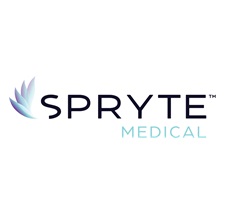 Spryte Medical has announced that its neuro optical coherence tomography (nOCT) technology has been granted Breakthrough Device designation by the US Food and Drug Administration (FDA). This recognition underscores the “transformative potential” of nOCT in neurointervention and cerebrovascular treatment, the company claims.
Spryte Medical has announced that its neuro optical coherence tomography (nOCT) technology has been granted Breakthrough Device designation by the US Food and Drug Administration (FDA). This recognition underscores the “transformative potential” of nOCT in neurointervention and cerebrovascular treatment, the company claims.
This designation from the US FDA not only recognises the potential revolutionary impact of nOCT but also expedites its development and review process, supporting reimbursement and timely access for patients and healthcare providers, the company also states in a press release.
In addition, Spryte has been included in the FDA’s new Total Product Life Cycle Advisory Program (TAP), which aims to help speed up development of high-quality, safe, effective and innovative medical devices that are critical to public health. Participation in TAP will provide Spryte with valuable feedback and support from the regulator, further accelerating the path to market for nOCT technology.
NOCT represents a “significant leap forward in neurointervention”, Spryte also claims—unlike traditional intravascular imaging systems designed primarily for cardiology, nOCT is specifically engineered for cerebrovascular navigation. This advanced intravascular imaging technology allows for detailed visualisation of the brain’s vascular anatomy at near-histologic levels to provide improved diagnostic capabilities and enhance treatment precision.
“Neurointervention has had an incredibly positive impact on the treatment of cerebrovascular conditions. NOCT intravascular imaging will allow us to advance the field even further,” said Demetrius Lopes (Advocate Aurora Health, Chicago, USA). “With this technology, we will be able to better visualise disease and devices, guide our decision making, and deliver even better patient care. I have followed the development of intravascular imaging in cardiology for many years. I always believed that OCT information could have an even greater impact in neurointervention outcomes and I am excited to bring the benefits of this technology into the brain for the first time ever. Spryte nOCT was developed specifically with neurointervention in mind and has the potential to overcome the many limitations that prevented its use in the neurovasculature previously. The initial nOCT clinical experience demonstrated consistently the ease of use, safety, and imaging quality. This is a dream coming true—our patients will benefit the most.”
“Our engagement with the FDA through the Breakthrough Device [designation] and TAP highlights the potential of Spryte Medical’s nOCT imaging platform for patients with cerebrovascular disease,” added David Kolstad, the company’s chief executive officer. “We look forward to working collaboratively with the FDA for the benefit of these patients.”
In addition to these recent announcements, late-breaking data on nOCT were delivered at the ongoing Society of NeuroInterventional Surgery (SNIS) annual meeting (22–26 July, Colorado Springs, USA), with Vitor Mendes Pereira (St Michael’s Hospital/University of Toronto, Toronto, Canada) reporting the clinical characterisation of cerebrovascular disease using the technology.









